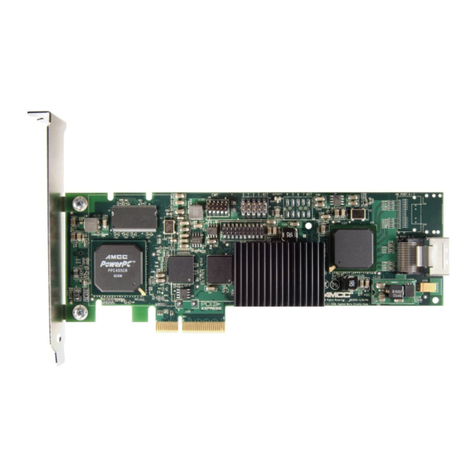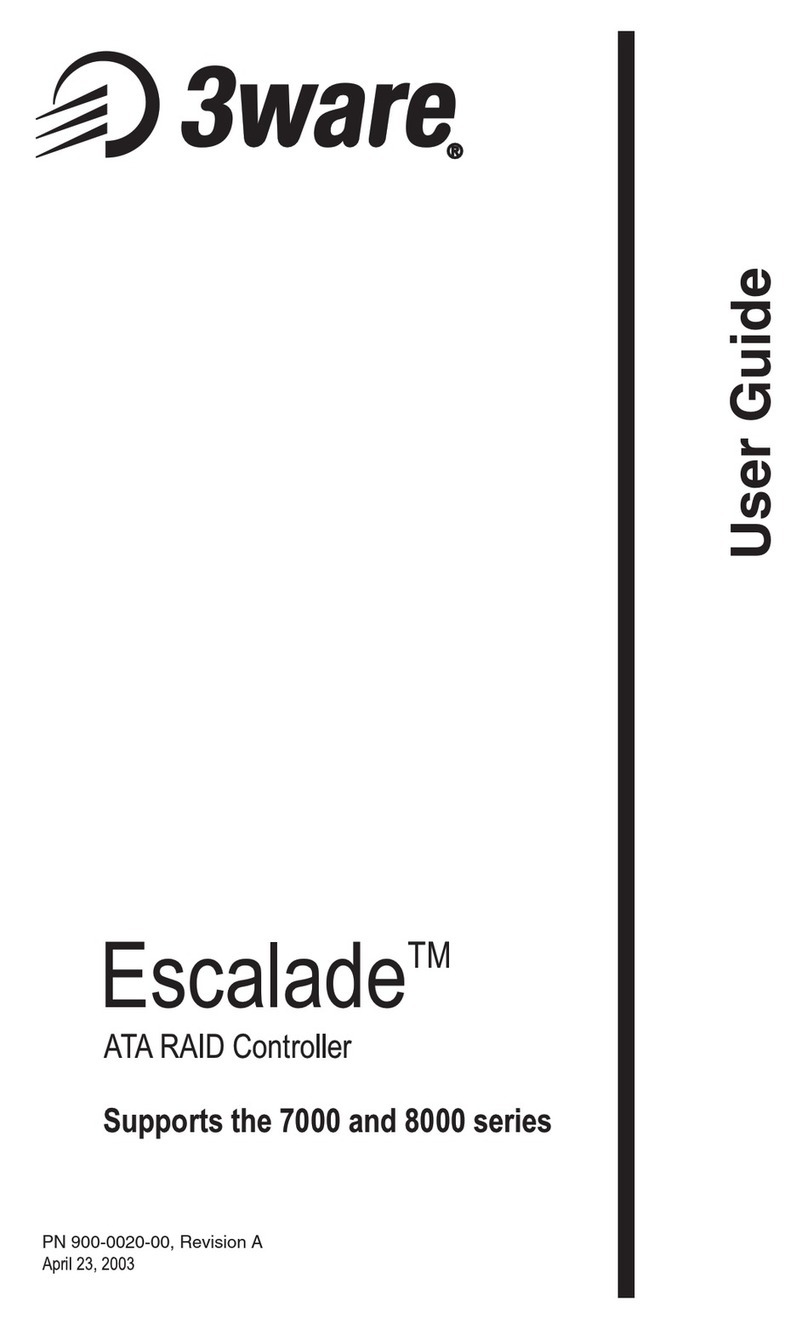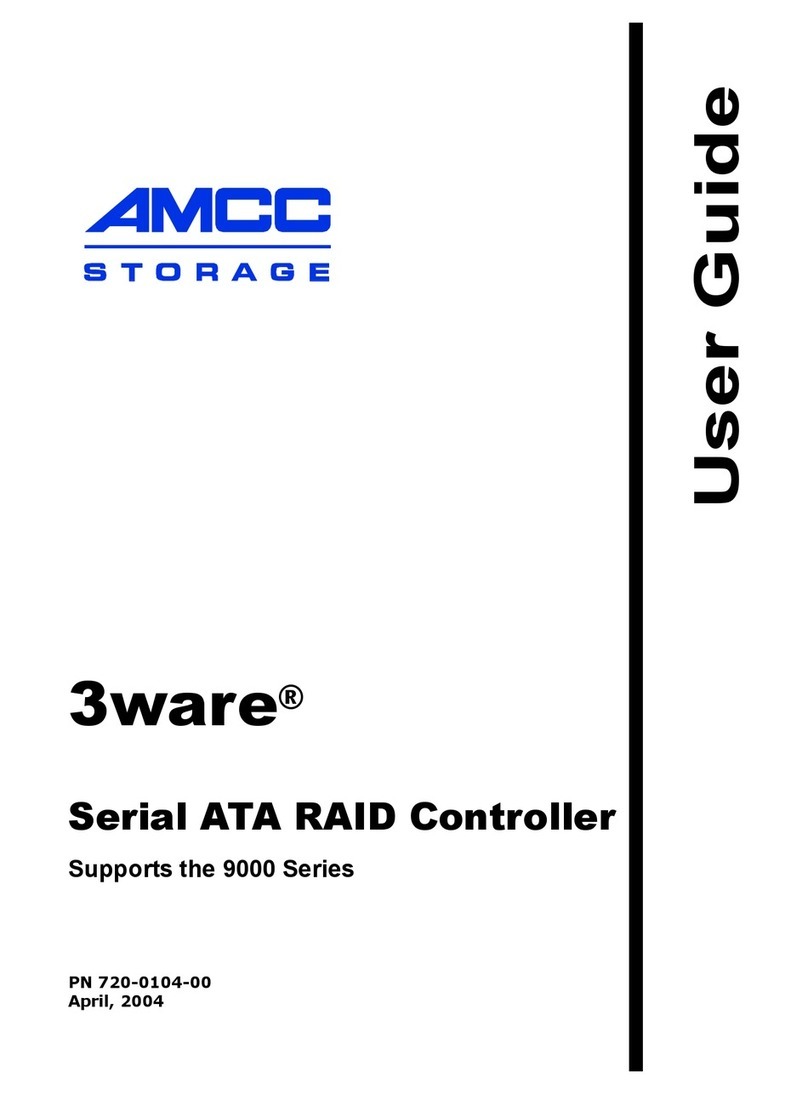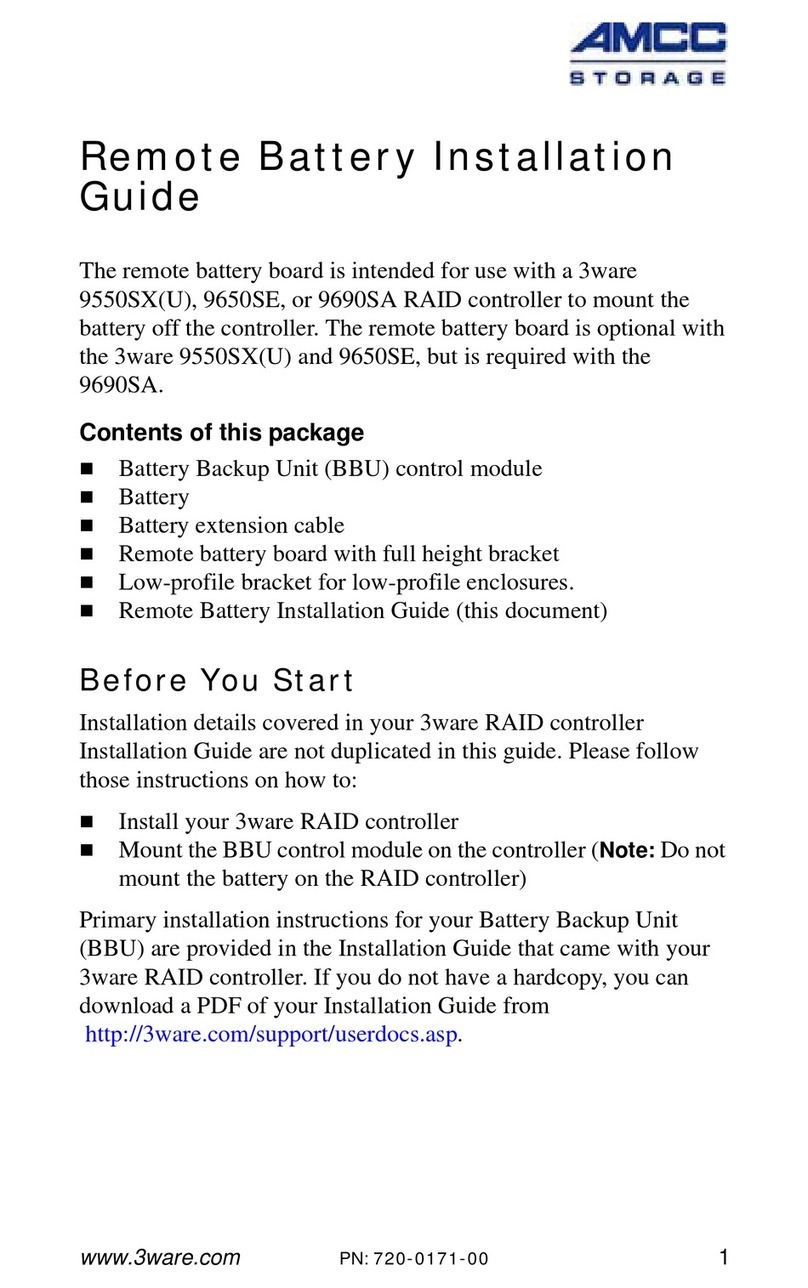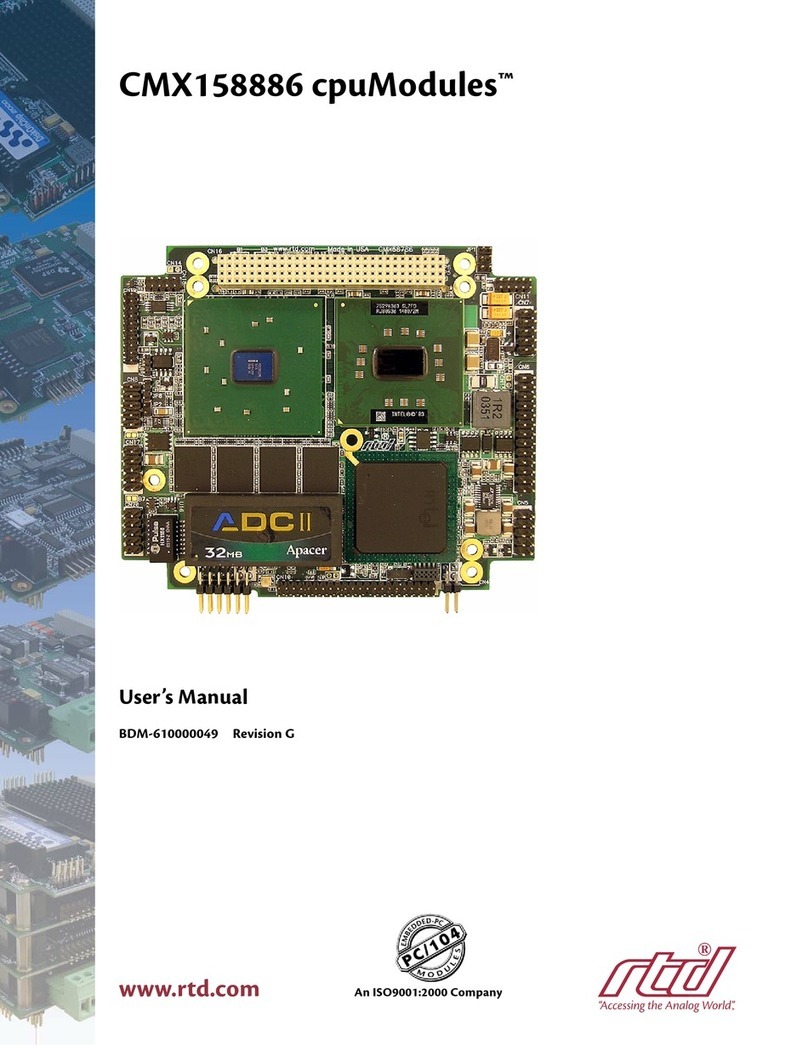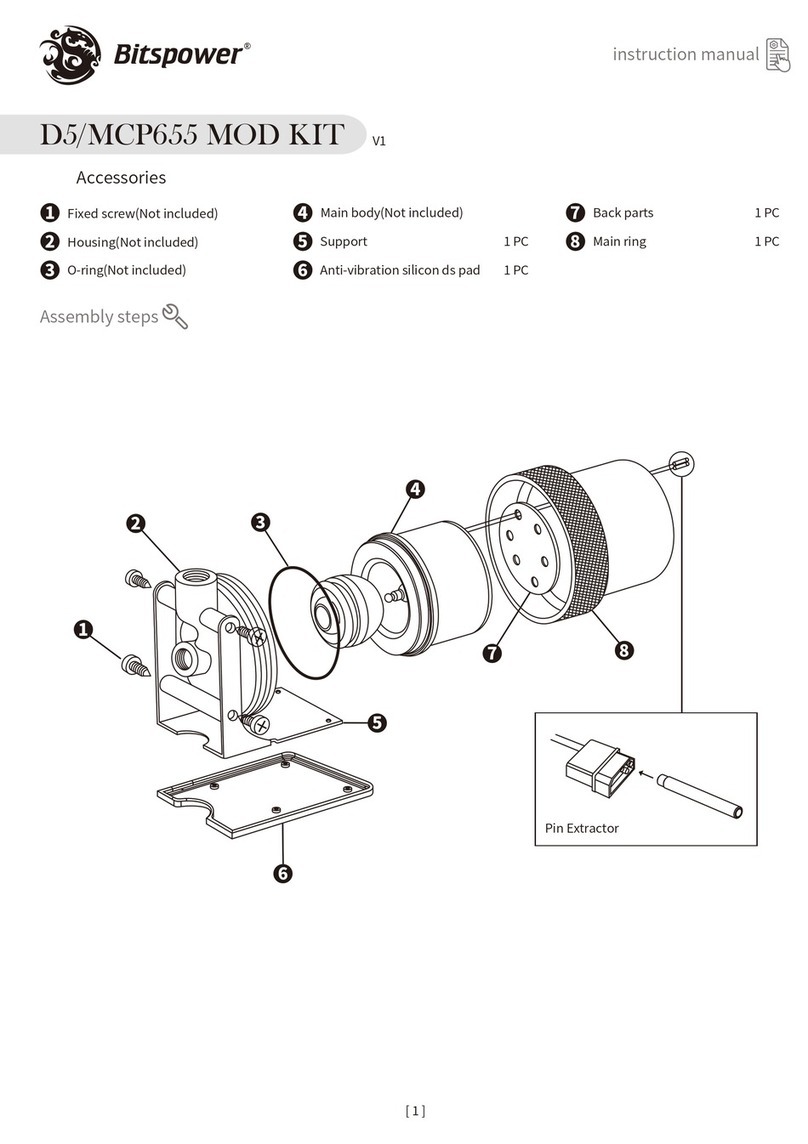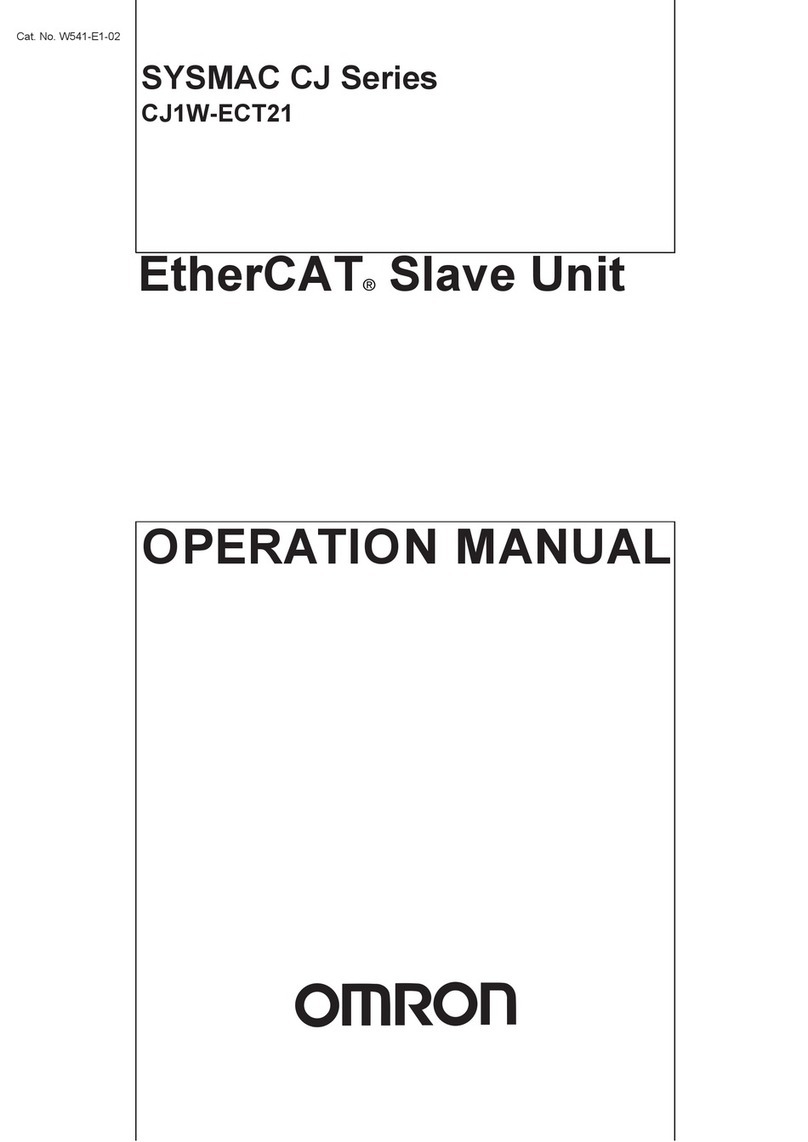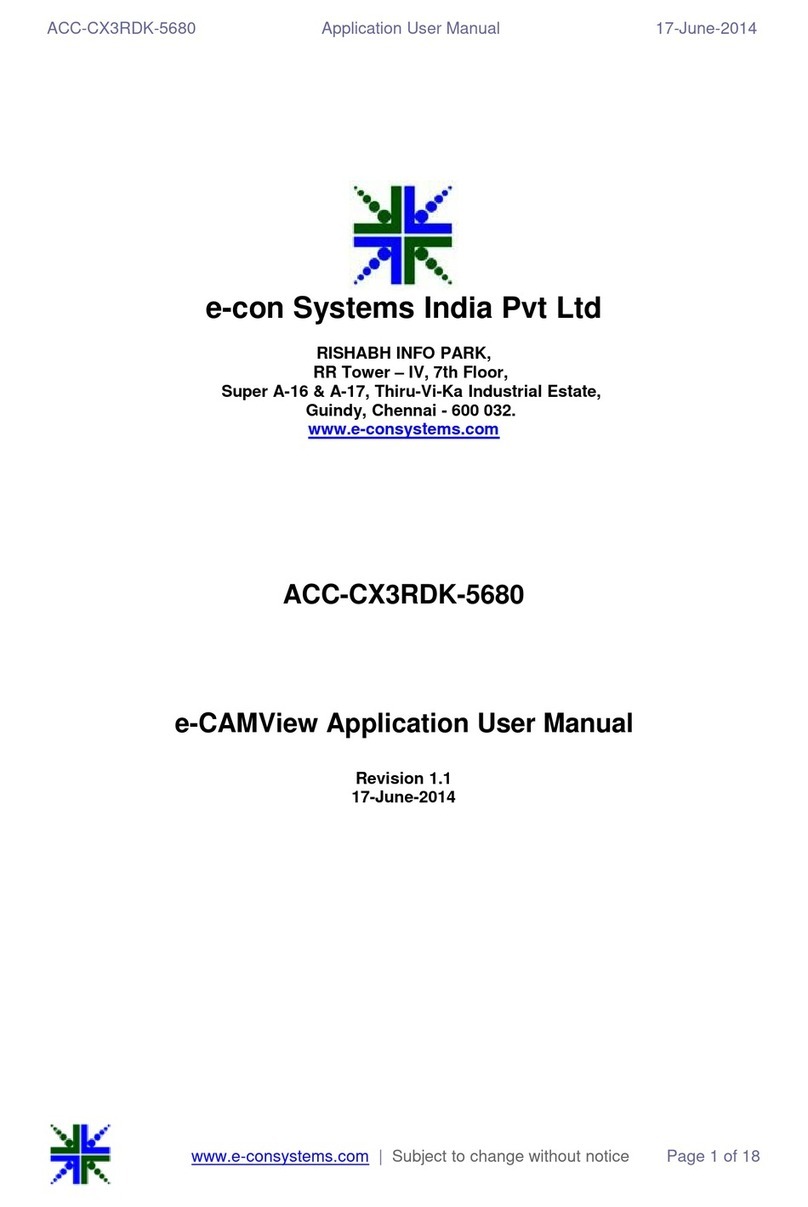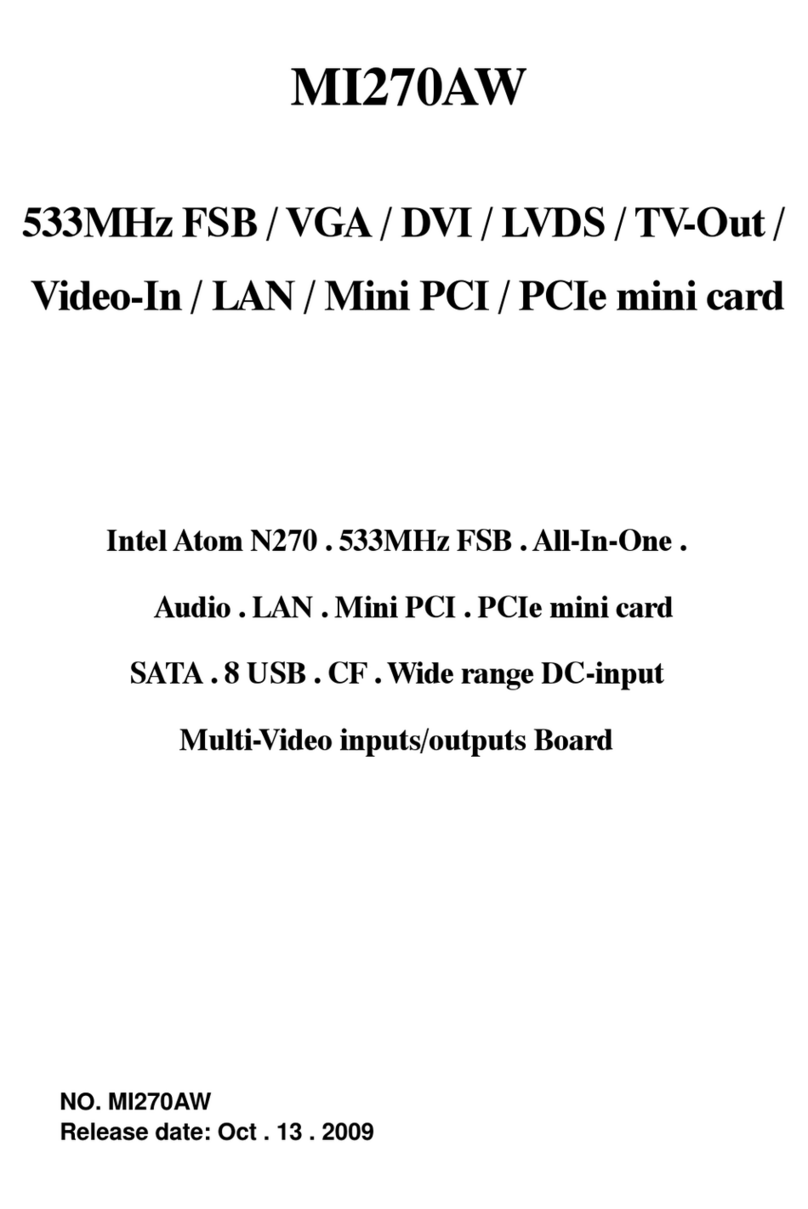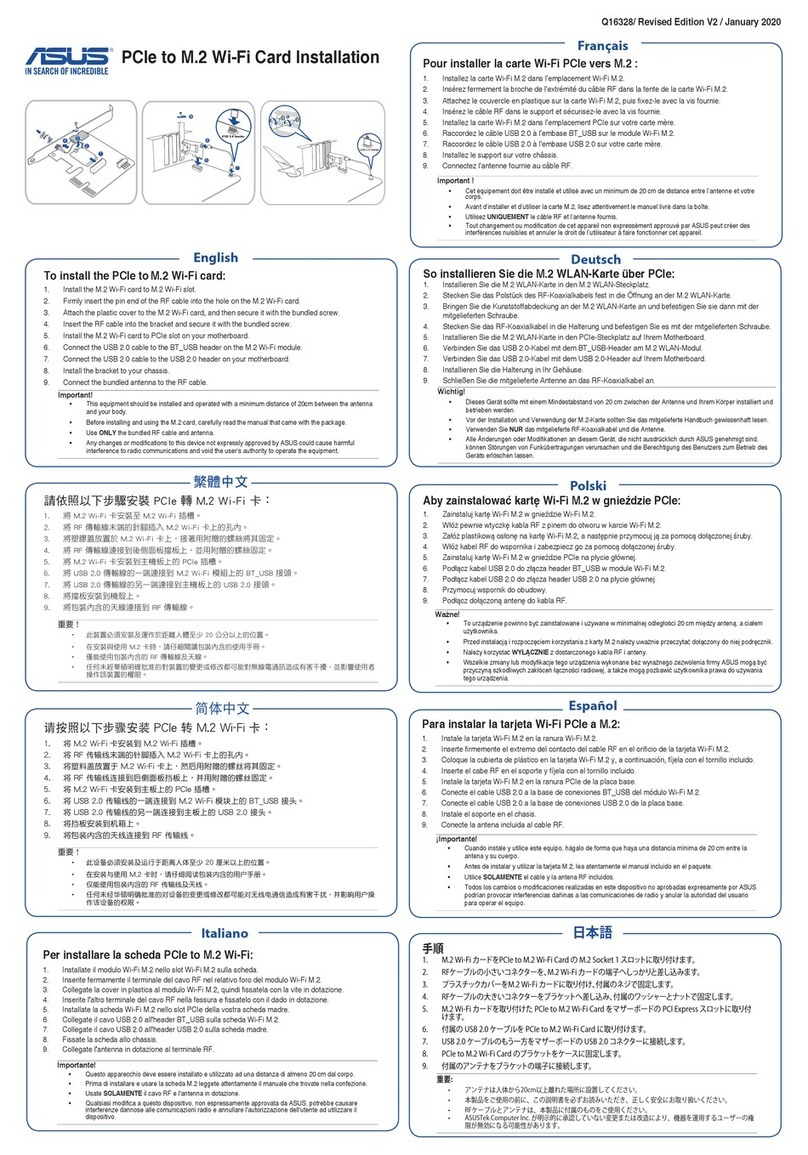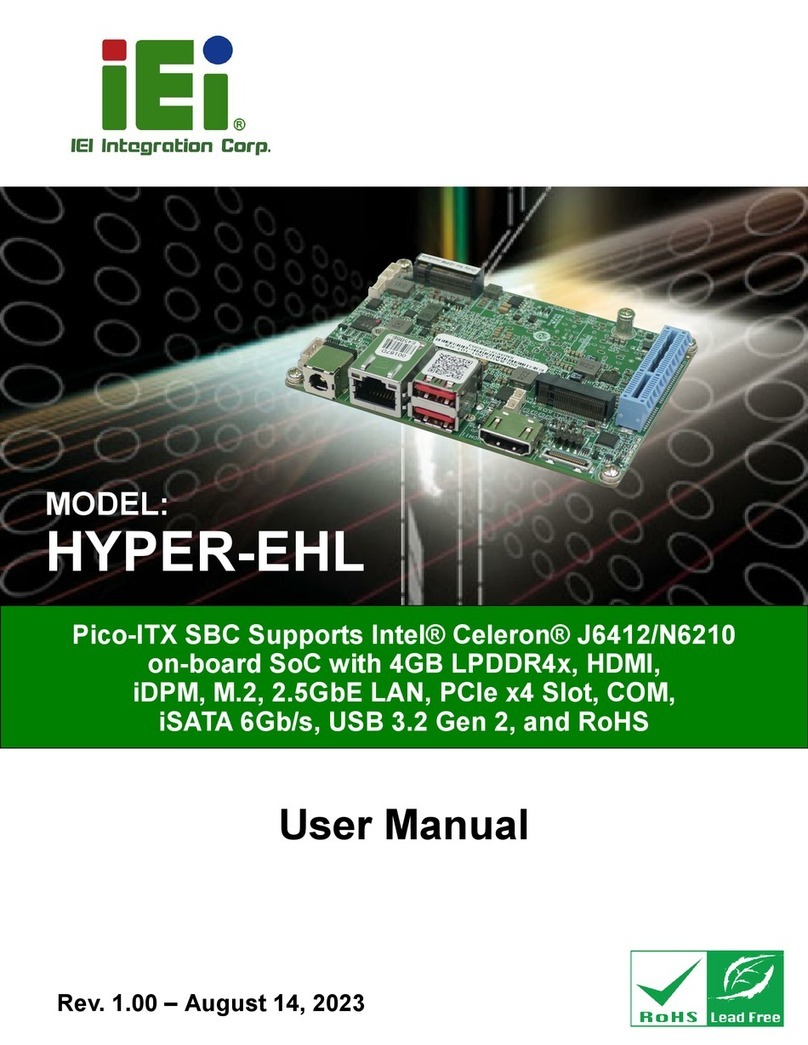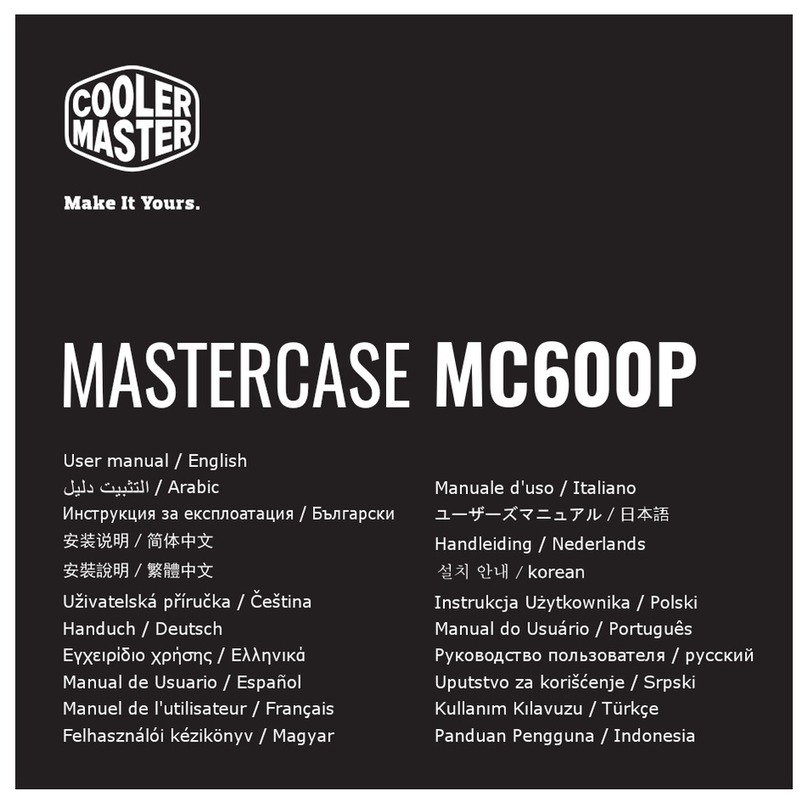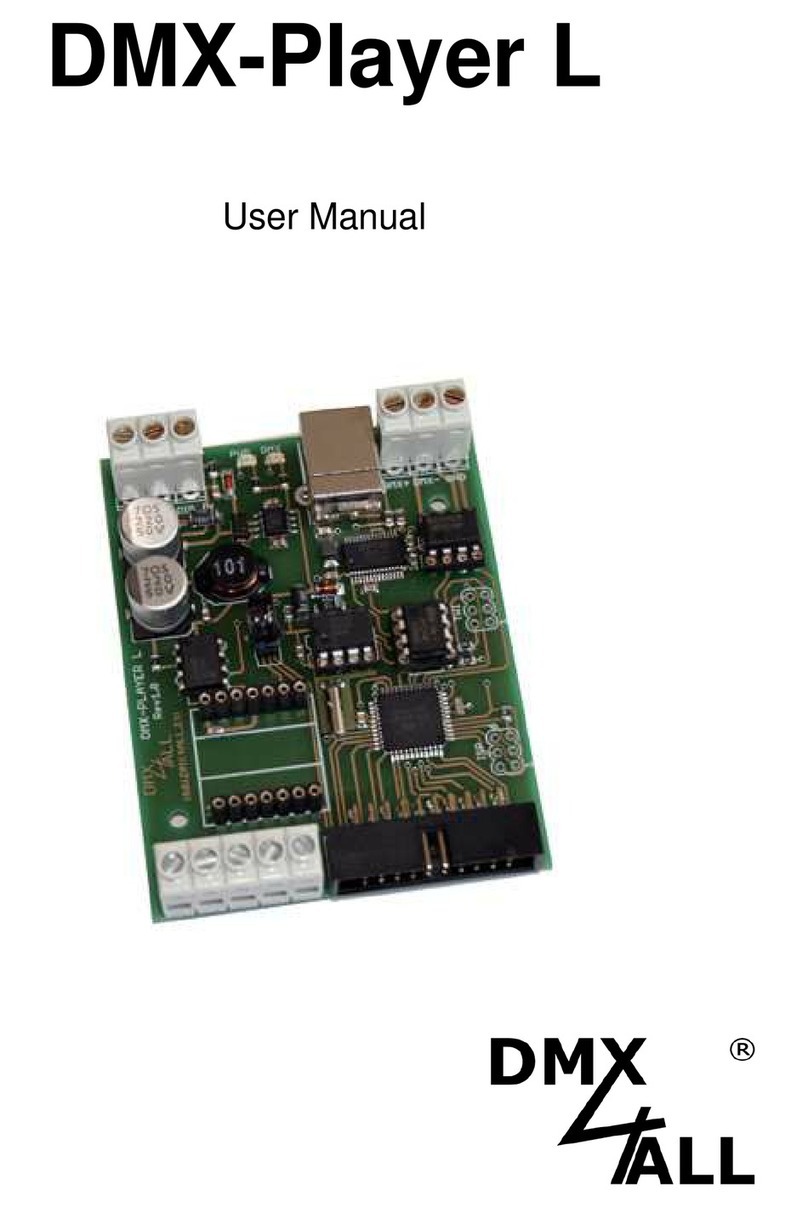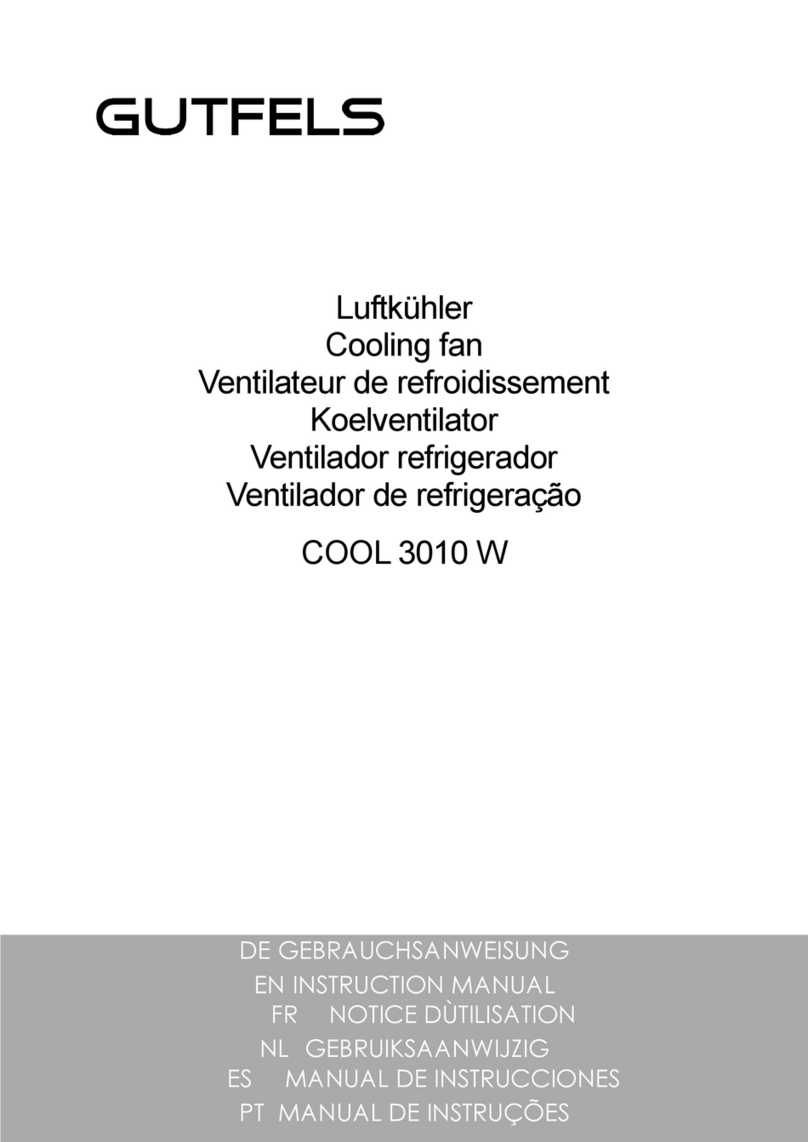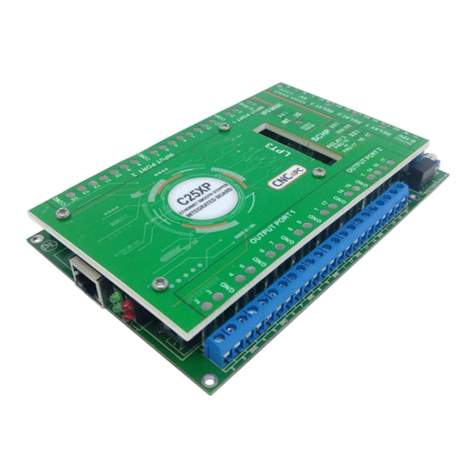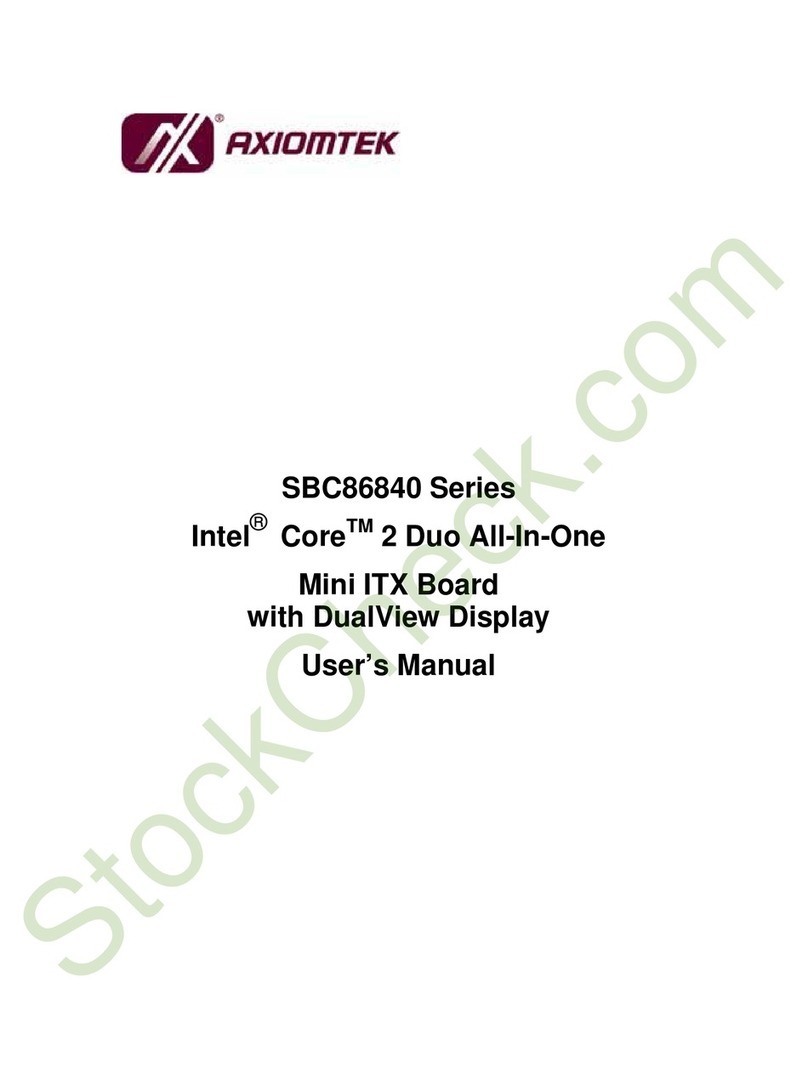3Ware 9650SE-2LPB-10 - Sataii Raid Hardware 10Pk User manual

3ware®Serial ATA
RAID Controller
Command Line Interface
Supports the 9000 Series
(9500S, 9550SX, 9590SE, 9650SE)
PN: 720-0162-00
March 2007
CLI Guide

www.3ware.com ii
Copyright
©2003-2007 Applied Micro Circuits Corporation (AMCC). All rights reserved. This
publication may be copied or reproduced for reference purposes only. All other
purposes require the express written consent of AMCC, 215 Moffett Park Drive,
Sunnyvale, CA 94089. AMCC shall not be responsible or liable for, and shall be held
harmless against, any and all damages, claims, and/or disputes that arise from the
copying or reproduction of this publication.
Trademarks
3ware®, Escalade®, 3DM®, and TwinStor® are all registered trademarks of AMCC.
The 3ware logo, 3BM, Multi-Lane, StorSave, StorSwitch, StreamFusion, and R5
Fusion are all trademarks of AMCC.Apple®, the Apple logo, and PowerMac® are
trademarks of Apple Computer Inc., registered in the United States and/or other
countries. Safari is a trademark of Apple Computer, Inc. PowerPC and the PowerPC
logo are trademarks of International Business Machines Corporation. Linux® is a
registered trademark of Linus Torvalds in the United States, other countries, or both.
Windows® is a registered trademark of Microsoft Corporation in the United States
and other countries. Firefox® is a registered trademark of the Mozilla Foundation.
PCI Express® is a registered trademark of PCI-SIG®. All other trademarks herein are
property of their respective owners.
Disclaimer
While every attempt is made to make this document as accurate as possible, AMCC
assumes no responsibility for errors or omissions in this document, nor does AMCC
make any commitment to update the information contained herein.

www.3ware.com iii
Table of Contents
About this CLI Guide . . . . . . . . . . . . . . . . . . . . . . . . . . . . . . . . . . . . . . . . . .1
Chapter 1. Introduction to the 3ware Command Line Interface. . . . . . . . . . . . . . . . . .2
Features of the CLI . . . . . . . . . . . . . . . . . . . . . . . . . . . . . . . . . . . . . . . . . . . . . . . . . . . 2
Supported Operating Systems . . . . . . . . . . . . . . . . . . . . . . . . . . . . . . . . . . . . . . . . . . 3
Terminology . . . . . . . . . . . . . . . . . . . . . . . . . . . . . . . . . . . . . . . . . . . . . . . . . . . . . . . . 3
Installing the 3ware CLI . . . . . . . . . . . . . . . . . . . . . . . . . . . . . . . . . . . . . . . . . . . . . . . 4
Installing the 3ware CLI on Mac OS X . . . . . . . . . . . . . . . . . . . . . . . . . . . . . . . . . . 4
Installing the 3ware CLI on Windows . . . . . . . . . . . . . . . . . . . . . . . . . . . . . . . . . . . 4
Installing the 3ware CLI on Linux and FreeBSD . . . . . . . . . . . . . . . . . . . . . . . . . . . 6
Working with 3ware CLI . . . . . . . . . . . . . . . . . . . . . . . . . . . . . . . . . . . . . . . . . . . . . . . 7
Using the command interface interactively . . . . . . . . . . . . . . . . . . . . . . . . . . . . . . . 7
Using a single command with output . . . . . . . . . . . . . . . . . . . . . . . . . . . . . . . . . . . 8
Using an input file to execute a script . . . . . . . . . . . . . . . . . . . . . . . . . . . . . . . . . . . 8
Outputting the CLI to a Text File . . . . . . . . . . . . . . . . . . . . . . . . . . . . . . . . . . . . . . . 9
Conventions . . . . . . . . . . . . . . . . . . . . . . . . . . . . . . . . . . . . . . . . . . . . . . . . . . . . . . 9
Understanding RAID Levels and Concepts . . . . . . . . . . . . . . . . . . . . . . . . . . . . . . . 10
RAID Concepts . . . . . . . . . . . . . . . . . . . . . . . . . . . . . . . . . . . . . . . . . . . . . . . . . . . 10
Available RAID Configurations . . . . . . . . . . . . . . . . . . . . . . . . . . . . . . . . . . . . . . . 11
Determining What RAID Level to Use . . . . . . . . . . . . . . . . . . . . . . . . . . . . . . . . . . 17
Chapter 2. CLI Syntax Reference . . . . . . . . . . . . . . . . . . . . . . . . . . . . . . . . . . . . . . . . .20
Common Tasks Mapped to CLI Commands . . . . . . . . . . . . . . . . . . . . . . . . . . . . . . . 20
Syntax Overview . . . . . . . . . . . . . . . . . . . . . . . . . . . . . . . . . . . . . . . . . . . . . . . . . . . 22
Shell Object Commands . . . . . . . . . . . . . . . . . . . . . . . . . . . . . . . . . . . . . . . . . . . . . . 24
focus Object . . . . . . . . . . . . . . . . . . . . . . . . . . . . . . . . . . . . . . . . . . . . . . . . . . . . . 24
show . . . . . . . . . . . . . . . . . . . . . . . . . . . . . . . . . . . . . . . . . . . . . . . . . . . . . . . . . . . 25
show ver . . . . . . . . . . . . . . . . . . . . . . . . . . . . . . . . . . . . . . . . . . . . . . . . . . . . . . . . 26
show alarms [reverse] . . . . . . . . . . . . . . . . . . . . . . . . . . . . . . . . . . . . . . . . . . . . . . 26
show diag . . . . . . . . . . . . . . . . . . . . . . . . . . . . . . . . . . . . . . . . . . . . . . . . . . . . . . . 26
show rebuild . . . . . . . . . . . . . . . . . . . . . . . . . . . . . . . . . . . . . . . . . . . . . . . . . . . . . 26
show verify . . . . . . . . . . . . . . . . . . . . . . . . . . . . . . . . . . . . . . . . . . . . . . . . . . . . . . 27
show selftest . . . . . . . . . . . . . . . . . . . . . . . . . . . . . . . . . . . . . . . . . . . . . . . . . . . . . 28
flush . . . . . . . . . . . . . . . . . . . . . . . . . . . . . . . . . . . . . . . . . . . . . . . . . . . . . . . . . . . . 28
rescan . . . . . . . . . . . . . . . . . . . . . . . . . . . . . . . . . . . . . . . . . . . . . . . . . . . . . . . . . . 28
commit . . . . . . . . . . . . . . . . . . . . . . . . . . . . . . . . . . . . . . . . . . . . . . . . . . . . . . . . . . 28
update fw=filename_with_path [force] . . . . . . . . . . . . . . . . . . . . . . . . . . . . . . . . . 28
Controller Object Commands . . . . . . . . . . . . . . . . . . . . . . . . . . . . . . . . . . . . . . . . . . 29
/cxshow . . . . . . . . . . . . . . . . . . . . . . . . . . . . . . . . . . . . . . . . . . . . . . . . . . . . . . . . 30
/cxshow attribute [attribute ...] . . . . . . . . . . . . . . . . . . . . . . . . . . . . . . . . . . . . . . . 31
/cxshow driver . . . . . . . . . . . . . . . . . . . . . . . . . . . . . . . . . . . . . . . . . . . . . . . . . . . 32
/cxshow model . . . . . . . . . . . . . . . . . . . . . . . . . . . . . . . . . . . . . . . . . . . . . . . . . . . 32
/cxshow firmware . . . . . . . . . . . . . . . . . . . . . . . . . . . . . . . . . . . . . . . . . . . . . . . . . 32
/cxshow bios . . . . . . . . . . . . . . . . . . . . . . . . . . . . . . . . . . . . . . . . . . . . . . . . . . . . . 32
/cxshow monitor . . . . . . . . . . . . . . . . . . . . . . . . . . . . . . . . . . . . . . . . . . . . . . . . . . 32
/cxshow serial . . . . . . . . . . . . . . . . . . . . . . . . . . . . . . . . . . . . . . . . . . . . . . . . . . . . 33
/cxshow pcb . . . . . . . . . . . . . . . . . . . . . . . . . . . . . . . . . . . . . . . . . . . . . . . . . . . . . 33
/cxshow pchip . . . . . . . . . . . . . . . . . . . . . . . . . . . . . . . . . . . . . . . . . . . . . . . . . . . . 33

iv 3ware Serial ATA RAID Controller CLI Guide
/cxshow achip . . . . . . . . . . . . . . . . . . . . . . . . . . . . . . . . . . . . . . . . . . . . . . . . . . . . 33
/cxshow numdrives . . . . . . . . . . . . . . . . . . . . . . . . . . . . . . . . . . . . . . . . . . . . . . . . 33
/cxshow numports . . . . . . . . . . . . . . . . . . . . . . . . . . . . . . . . . . . . . . . . . . . . . . . . 34
/cxshow numunits . . . . . . . . . . . . . . . . . . . . . . . . . . . . . . . . . . . . . . . . . . . . . . . . . 34
/cxshow ctlbus . . . . . . . . . . . . . . . . . . . . . . . . . . . . . . . . . . . . . . . . . . . . . . . . . . . 34
/cxshow exportjbod . . . . . . . . . . . . . . . . . . . . . . . . . . . . . . . . . . . . . . . . . . . . . . . 34
/cxshow spinup . . . . . . . . . . . . . . . . . . . . . . . . . . . . . . . . . . . . . . . . . . . . . . . . . . . 35
/cxshow stagger . . . . . . . . . . . . . . . . . . . . . . . . . . . . . . . . . . . . . . . . . . . . . . . . . . 35
/cxshow ondegrade . . . . . . . . . . . . . . . . . . . . . . . . . . . . . . . . . . . . . . . . . . . . . . . 35
/cxshow autocarve . . . . . . . . . . . . . . . . . . . . . . . . . . . . . . . . . . . . . . . . . . . . . . . . 35
/cxshow carvesize . . . . . . . . . . . . . . . . . . . . . . . . . . . . . . . . . . . . . . . . . . . . . . . . 36
/cxshow memory . . . . . . . . . . . . . . . . . . . . . . . . . . . . . . . . . . . . . . . . . . . . . . . . . 36
/cxshow autorebuild . . . . . . . . . . . . . . . . . . . . . . . . . . . . . . . . . . . . . . . . . . . . . . . 37
/cxshow unitstatus . . . . . . . . . . . . . . . . . . . . . . . . . . . . . . . . . . . . . . . . . . . . . . . . 37
/cxshow allunitstatus . . . . . . . . . . . . . . . . . . . . . . . . . . . . . . . . . . . . . . . . . . . . . . 38
/cxshow drivestatus . . . . . . . . . . . . . . . . . . . . . . . . . . . . . . . . . . . . . . . . . . . . . . . 38
/cxshow all . . . . . . . . . . . . . . . . . . . . . . . . . . . . . . . . . . . . . . . . . . . . . . . . . . . . . . 39
/cxadd type=<RaidType> disk=<p:-p> [stripe=Stripe] [noscan]
[group=<3|4|5|6|7|8|9|10|11|12>] [nocache] [autoverify] [noqpolicy][ignoreECC]
[name=string] [storsave=<protect|balance|perform>] . . . . . . . . . . . . . . . . . . . 40
/cxrescan [noscan] . . . . . . . . . . . . . . . . . . . . . . . . . . . . . . . . . . . . . . . . . . . . . . . . 43
/cxcommit . . . . . . . . . . . . . . . . . . . . . . . . . . . . . . . . . . . . . . . . . . . . . . . . . . . . . . . 44
/cxflush . . . . . . . . . . . . . . . . . . . . . . . . . . . . . . . . . . . . . . . . . . . . . . . . . . . . . . . . . 44
/cxupdate fw=filename_with_path [force] . . . . . . . . . . . . . . . . . . . . . . . . . . . . . . . 44
/cxshow alarms [reverse] . . . . . . . . . . . . . . . . . . . . . . . . . . . . . . . . . . . . . . . . . . . 45
/cxshow diag . . . . . . . . . . . . . . . . . . . . . . . . . . . . . . . . . . . . . . . . . . . . . . . . . . . . 46
/cxshow rebuild . . . . . . . . . . . . . . . . . . . . . . . . . . . . . . . . . . . . . . . . . . . . . . . . . . 46
/cxshow verify . . . . . . . . . . . . . . . . . . . . . . . . . . . . . . . . . . . . . . . . . . . . . . . . . . . . 48
/cxshow selftest . . . . . . . . . . . . . . . . . . . . . . . . . . . . . . . . . . . . . . . . . . . . . . . . . . 49
/cxadd rebuild=ddd:hh:duration . . . . . . . . . . . . . . . . . . . . . . . . . . . . . . . . . . . . . . 50
/cxadd verify=ddd:hh:duration . . . . . . . . . . . . . . . . . . . . . . . . . . . . . . . . . . . . . . . 51
/cxadd selftest=ddd:hh . . . . . . . . . . . . . . . . . . . . . . . . . . . . . . . . . . . . . . . . . . . . . 52
/cxdel rebuild=slot_id . . . . . . . . . . . . . . . . . . . . . . . . . . . . . . . . . . . . . . . . . . . . . . 53
/cxdel verify=slot_id . . . . . . . . . . . . . . . . . . . . . . . . . . . . . . . . . . . . . . . . . . . . . . . 53
/cxdel selftest=slot_id . . . . . . . . . . . . . . . . . . . . . . . . . . . . . . . . . . . . . . . . . . . . . . 53
/cxset rebuild=enable|disable|1..5 . . . . . . . . . . . . . . . . . . . . . . . . . . . . . . . . . . . . 53
/cxset verify=enable|disable|1..5 . . . . . . . . . . . . . . . . . . . . . . . . . . . . . . . . . . . . . 54
/cxset selftest=enable|disable [task=UDMA|SMART] . . . . . . . . . . . . . . . . . . . . . . 54
/cxset exportjbod=on|off . . . . . . . . . . . . . . . . . . . . . . . . . . . . . . . . . . . . . . . . . . . . 55
/cxset ondegrade=cacheoff|follow . . . . . . . . . . . . . . . . . . . . . . . . . . . . . . . . . . . . 55
/cxset spinup=nn . . . . . . . . . . . . . . . . . . . . . . . . . . . . . . . . . . . . . . . . . . . . . . . . . 55
/cxset stagger=nn . . . . . . . . . . . . . . . . . . . . . . . . . . . . . . . . . . . . . . . . . . . . . . . . . 56
/cxset autocarve=on|off . . . . . . . . . . . . . . . . . . . . . . . . . . . . . . . . . . . . . . . . . . . . 56
/cxset carvesize=[1024..2048] . . . . . . . . . . . . . . . . . . . . . . . . . . . . . . . . . . . . . . . 56
/cxset autorebuild=on|off . . . . . . . . . . . . . . . . . . . . . . . . . . . . . . . . . . . . . . . . . . . 57
/cx set autodetect=on|off disk=<p:-p>|all . . . . . . . . . . . . . . . . . . . . . . . . . . . . . . . . 57
/cxstart mediascan . . . . . . . . . . . . . . . . . . . . . . . . . . . . . . . . . . . . . . . . . . . . . . . . 58
/cxstop mediascan . . . . . . . . . . . . . . . . . . . . . . . . . . . . . . . . . . . . . . . . . . . . . . . . 59
Unit Object Commands . . . . . . . . . . . . . . . . . . . . . . . . . . . . . . . . . . . . . . . . . . . . . . . 59
/cx/uxshow . . . . . . . . . . . . . . . . . . . . . . . . . . . . . . . . . . . . . . . . . . . . . . . . . . . . . . 60
/cx/uxshow attribute [attribute ...] . . . . . . . . . . . . . . . . . . . . . . . . . . . . . . . . . . . . . 61
/cx/uxshow status . . . . . . . . . . . . . . . . . . . . . . . . . . . . . . . . . . . . . . . . . . . . . . . . . 61
/cx/uxshow rebuildstatus . . . . . . . . . . . . . . . . . . . . . . . . . . . . . . . . . . . . . . . . . . . 61
/cx/uxshow verifystatus . . . . . . . . . . . . . . . . . . . . . . . . . . . . . . . . . . . . . . . . . . . . 61
/cx/uxshow initializestatus . . . . . . . . . . . . . . . . . . . . . . . . . . . . . . . . . . . . . . . . . . 62

www.3ware.com v
/cx/uxshow name . . . . . . . . . . . . . . . . . . . . . . . . . . . . . . . . . . . . . . . . . . . . . . . . . 62
/cx/uxshow serial . . . . . . . . . . . . . . . . . . . . . . . . . . . . . . . . . . . . . . . . . . . . . . . . . 62
/cx/uxshow qpolicy . . . . . . . . . . . . . . . . . . . . . . . . . . . . . . . . . . . . . . . . . . . . . . . . 62
/cx/uxshow storsave . . . . . . . . . . . . . . . . . . . . . . . . . . . . . . . . . . . . . . . . . . . . . . . 63
/cx/uxshow identify . . . . . . . . . . . . . . . . . . . . . . . . . . . . . . . . . . . . . . . . . . . . . . . . 63
/cx/uxshow autoverify . . . . . . . . . . . . . . . . . . . . . . . . . . . . . . . . . . . . . . . . . . . . . . 63
/cx/uxshow cache . . . . . . . . . . . . . . . . . . . . . . . . . . . . . . . . . . . . . . . . . . . . . . . . . 63
/cx/uxshow ignoreECC . . . . . . . . . . . . . . . . . . . . . . . . . . . . . . . . . . . . . . . . . . . . . 64
/cx/uxshow volumes . . . . . . . . . . . . . . . . . . . . . . . . . . . . . . . . . . . . . . . . . . . . . . . 64
/cx/uxshow all . . . . . . . . . . . . . . . . . . . . . . . . . . . . . . . . . . . . . . . . . . . . . . . . . . . . 64
/cx/uxremove [noscan] [quiet] . . . . . . . . . . . . . . . . . . . . . . . . . . . . . . . . . . . . . . . 65
/cx/ux del [noscan] [quiet] . . . . . . . . . . . . . . . . . . . . . . . . . . . . . . . . . . . . . . . . . . . 66
/cx/uxstart rebuild disk=p<p:-p...> [ignoreECC] . . . . . . . . . . . . . . . . . . . . . . . . . . 66
/cx/uxstart verify . . . . . . . . . . . . . . . . . . . . . . . . . . . . . . . . . . . . . . . . . . . . . . . . . . 67
/cx/uxpause rebuild . . . . . . . . . . . . . . . . . . . . . . . . . . . . . . . . . . . . . . . . . . . . . . . 67
/cx/uxresume rebuild . . . . . . . . . . . . . . . . . . . . . . . . . . . . . . . . . . . . . . . . . . . . . . 67
/cx/ux stop verify . . . . . . . . . . . . . . . . . . . . . . . . . . . . . . . . . . . . . . . . . . . . . . . . . . 68
/cx/uxflush . . . . . . . . . . . . . . . . . . . . . . . . . . . . . . . . . . . . . . . . . . . . . . . . . . . . . . 68
/cx/uxset autoverify=on|off . . . . . . . . . . . . . . . . . . . . . . . . . . . . . . . . . . . . . . . . . . 68
/cx/uxset cache=on|off [quiet] . . . . . . . . . . . . . . . . . . . . . . . . . . . . . . . . . . . . . . . . 68
/cx/uxset identify=on|off . . . . . . . . . . . . . . . . . . . . . . . . . . . . . . . . . . . . . . . . . . . . 69
/cx/uxset ignoreECC=on|off . . . . . . . . . . . . . . . . . . . . . . . . . . . . . . . . . . . . . . . . . 69
/cx/uxset name=string . . . . . . . . . . . . . . . . . . . . . . . . . . . . . . . . . . . . . . . . . . . . . 70
/cx/uxset qpolicy=on|off . . . . . . . . . . . . . . . . . . . . . . . . . . . . . . . . . . . . . . . . . . . . 70
/cx/uxset storsave=protect|balance|perform [quiet] . . . . . . . . . . . . . . . . . . . . . . . 70
/cx/uxmigrate type=RaidType [disk=p:-p]
[group=3|4|5|6|7|8|9|10|11|12] [stripe=Stripe] [noscan] [nocache] [autoverify] 72
Port Object Commands . . . . . . . . . . . . . . . . . . . . . . . . . . . . . . . . . . . . . . . . . . . . . . 77
/cx/pxshow . . . . . . . . . . . . . . . . . . . . . . . . . . . . . . . . . . . . . . . . . . . . . . . . . . . . . . 77
/cx/pxshow attribute [attribute ...] . . . . . . . . . . . . . . . . . . . . . . . . . . . . . . . . . . . . . 77
/cx/pxshow status . . . . . . . . . . . . . . . . . . . . . . . . . . . . . . . . . . . . . . . . . . . . . . . . . 78
/cx/pxshow model . . . . . . . . . . . . . . . . . . . . . . . . . . . . . . . . . . . . . . . . . . . . . . . . . 78
/cx/pxshow serial . . . . . . . . . . . . . . . . . . . . . . . . . . . . . . . . . . . . . . . . . . . . . . . . . 78
/cx/pxshow firmware . . . . . . . . . . . . . . . . . . . . . . . . . . . . . . . . . . . . . . . . . . . . . . . 78
/cx/pxshow identify . . . . . . . . . . . . . . . . . . . . . . . . . . . . . . . . . . . . . . . . . . . . . . . . 78
/cx/pxshow ncq . . . . . . . . . . . . . . . . . . . . . . . . . . . . . . . . . . . . . . . . . . . . . . . . . . . 79
/cx/pxshow lspeed . . . . . . . . . . . . . . . . . . . . . . . . . . . . . . . . . . . . . . . . . . . . . . . . 79
/cx/pxshow capacity . . . . . . . . . . . . . . . . . . . . . . . . . . . . . . . . . . . . . . . . . . . . . . . 79
/cx/pxshow smart . . . . . . . . . . . . . . . . . . . . . . . . . . . . . . . . . . . . . . . . . . . . . . . . . 79
/cx/pxshow all . . . . . . . . . . . . . . . . . . . . . . . . . . . . . . . . . . . . . . . . . . . . . . . . . . . . 80
/cx/pxremove [noscan] [quiet] . . . . . . . . . . . . . . . . . . . . . . . . . . . . . . . . . . . . . . . 81
/cx/pxset identify=on|off . . . . . . . . . . . . . . . . . . . . . . . . . . . . . . . . . . . . . . . . . . . . 81
BBU Object Commands . . . . . . . . . . . . . . . . . . . . . . . . . . . . . . . . . . . . . . . . . . . . . . 82
/cx/bbu show . . . . . . . . . . . . . . . . . . . . . . . . . . . . . . . . . . . . . . . . . . . . . . . . . . . . . 82
/cx/bbu show attribute [attribute ...] . . . . . . . . . . . . . . . . . . . . . . . . . . . . . . . . . . . . 83
/cx/bbu show status . . . . . . . . . . . . . . . . . . . . . . . . . . . . . . . . . . . . . . . . . . . . . . . . 83
/cx/bbu show batinst . . . . . . . . . . . . . . . . . . . . . . . . . . . . . . . . . . . . . . . . . . . . . . . 84
/cx/bbu show lasttest . . . . . . . . . . . . . . . . . . . . . . . . . . . . . . . . . . . . . . . . . . . . . . . 84
/cx/bbu show volt . . . . . . . . . . . . . . . . . . . . . . . . . . . . . . . . . . . . . . . . . . . . . . . . . . 84
/cx/bbu show temp . . . . . . . . . . . . . . . . . . . . . . . . . . . . . . . . . . . . . . . . . . . . . . . . 84
/cx/bbu show cap . . . . . . . . . . . . . . . . . . . . . . . . . . . . . . . . . . . . . . . . . . . . . . . . . 84
/cx/bbu show serial . . . . . . . . . . . . . . . . . . . . . . . . . . . . . . . . . . . . . . . . . . . . . . . . 85
/cx/bbu show fw . . . . . . . . . . . . . . . . . . . . . . . . . . . . . . . . . . . . . . . . . . . . . . . . . . . 85
/cx/bbu show pcb . . . . . . . . . . . . . . . . . . . . . . . . . . . . . . . . . . . . . . . . . . . . . . . . . 85
/cx/bbu show bootloader . . . . . . . . . . . . . . . . . . . . . . . . . . . . . . . . . . . . . . . . . . . . 85

vi 3ware Serial ATA RAID Controller CLI Guide
/cx/bbu show all . . . . . . . . . . . . . . . . . . . . . . . . . . . . . . . . . . . . . . . . . . . . . . . . . . . 85
/cx/bbu test [quiet] . . . . . . . . . . . . . . . . . . . . . . . . . . . . . . . . . . . . . . . . . . . . . . . . . 86
/cx/bbu enable . . . . . . . . . . . . . . . . . . . . . . . . . . . . . . . . . . . . . . . . . . . . . . . . . . . . 86
/cx/bbu disable [quiet] . . . . . . . . . . . . . . . . . . . . . . . . . . . . . . . . . . . . . . . . . . . . . . 86
Enclosure Object Commands . . . . . . . . . . . . . . . . . . . . . . . . . . . . . . . . . . . . . . . . . . 87
/exshow . . . . . . . . . . . . . . . . . . . . . . . . . . . . . . . . . . . . . . . . . . . . . . . . . . . . . . . . 87
/exshow attribute [attribute ...] . . . . . . . . . . . . . . . . . . . . . . . . . . . . . . . . . . . . . . . 88
/exshow controllers . . . . . . . . . . . . . . . . . . . . . . . . . . . . . . . . . . . . . . . . . . . . . . . 88
/exshow slots . . . . . . . . . . . . . . . . . . . . . . . . . . . . . . . . . . . . . . . . . . . . . . . . . . . . 89
/exshow fans . . . . . . . . . . . . . . . . . . . . . . . . . . . . . . . . . . . . . . . . . . . . . . . . . . . . 89
/exshow temp . . . . . . . . . . . . . . . . . . . . . . . . . . . . . . . . . . . . . . . . . . . . . . . . . . . . 89
/exshow all . . . . . . . . . . . . . . . . . . . . . . . . . . . . . . . . . . . . . . . . . . . . . . . . . . . . . . 89
/ex/slotxshow . . . . . . . . . . . . . . . . . . . . . . . . . . . . . . . . . . . . . . . . . . . . . . . . . . . . 90
/ex/slotxshow identify . . . . . . . . . . . . . . . . . . . . . . . . . . . . . . . . . . . . . . . . . . . . . . 90
/ex/slotxset identify=on|off . . . . . . . . . . . . . . . . . . . . . . . . . . . . . . . . . . . . . . . . . . 90
/ex/fanxshow . . . . . . . . . . . . . . . . . . . . . . . . . . . . . . . . . . . . . . . . . . . . . . . . . . . . 91
/ex/tempxshow . . . . . . . . . . . . . . . . . . . . . . . . . . . . . . . . . . . . . . . . . . . . . . . . . . . 91
Help Commands . . . . . . . . . . . . . . . . . . . . . . . . . . . . . . . . . . . . . . . . . . . . . . . . . . . . 91
Help with specific commands . . . . . . . . . . . . . . . . . . . . . . . . . . . . . . . . . . . . . . . . 91
Help with attributes . . . . . . . . . . . . . . . . . . . . . . . . . . . . . . . . . . . . . . . . . . . . . . . . 93
help . . . . . . . . . . . . . . . . . . . . . . . . . . . . . . . . . . . . . . . . . . . . . . . . . . . . . . . . . . . . 93
help show . . . . . . . . . . . . . . . . . . . . . . . . . . . . . . . . . . . . . . . . . . . . . . . . . . . . . . . 94
help flush . . . . . . . . . . . . . . . . . . . . . . . . . . . . . . . . . . . . . . . . . . . . . . . . . . . . . . . . 94
help rescan . . . . . . . . . . . . . . . . . . . . . . . . . . . . . . . . . . . . . . . . . . . . . . . . . . . . . . 94
help update . . . . . . . . . . . . . . . . . . . . . . . . . . . . . . . . . . . . . . . . . . . . . . . . . . . . . . 94
help commit . . . . . . . . . . . . . . . . . . . . . . . . . . . . . . . . . . . . . . . . . . . . . . . . . . . . . . 94
help focus . . . . . . . . . . . . . . . . . . . . . . . . . . . . . . . . . . . . . . . . . . . . . . . . . . . . . . . 95
help /cx . . . . . . . . . . . . . . . . . . . . . . . . . . . . . . . . . . . . . . . . . . . . . . . . . . . . . . . . . 95
help /cx/ux . . . . . . . . . . . . . . . . . . . . . . . . . . . . . . . . . . . . . . . . . . . . . . . . . . . . . . . 95
help /cx/px . . . . . . . . . . . . . . . . . . . . . . . . . . . . . . . . . . . . . . . . . . . . . . . . . . . . . . . 95
help /cx/bbu . . . . . . . . . . . . . . . . . . . . . . . . . . . . . . . . . . . . . . . . . . . . . . . . . . . . . . 95
help /ex . . . . . . . . . . . . . . . . . . . . . . . . . . . . . . . . . . . . . . . . . . . . . . . . . . . . . . . . . 95
help /ex/slotx . . . . . . . . . . . . . . . . . . . . . . . . . . . . . . . . . . . . . . . . . . . . . . . . . . . . . 95
help /ex/fanx . . . . . . . . . . . . . . . . . . . . . . . . . . . . . . . . . . . . . . . . . . . . . . . . . . . . . 96
help /ex/tempx . . . . . . . . . . . . . . . . . . . . . . . . . . . . . . . . . . . . . . . . . . . . . . . . . . . . 96
Command Logging . . . . . . . . . . . . . . . . . . . . . . . . . . . . . . . . . . . . . . . . . . . . . . . . . . 96
Return Code . . . . . . . . . . . . . . . . . . . . . . . . . . . . . . . . . . . . . . . . . . . . . . . . . . . . . . . 96

www.3ware.com 1
About this CLI Guide
3ware Serial ATA RAID Controller CLI Guide provides instructions for
configuring and maintaining your 3ware controller using 3ware’s command
line interface (CLI).
This guide assumes that you have already installed your 3ware RAID
controller in your system and set up your 3ware Sidecar, if you have one. If
you have not yet done so, see the installation guide that came with your 3ware
RAID controller for instructions.
AMCC makes a number of 3ware controller models, including 9000-series
(9500S, 9550SX, 9590SE, and 9650SE), and earlier 7000/8000 series boards.
The Command Syntax described in this document supports all of those
boards, although not all commands are supported on every controller. When a
command is not supported for all controllers, the specific model numbers that
it applies to are indicated with the command.
There are often multiple ways to accomplish the same configuration and
maintenance tasks for your 3ware controller. While this manual includes
instructions for performing tasks using the command line interface, you can
also use the following applications:
•3ware BIOS Manager (not applicable to Mac OS)
•3DM®2 (3ware Disk Manager)
For details, see the user guide or the 3ware HTML Bookshelf.
For Mac Users: The 3ware controllers used for the Apple® Mac Pro and the
Power Mac® G5 are the 9650SE-4LPME and the 9590SE-4ME. For your Mac Pro
or Power Mac G5, the CLI commands that apply are those identified as 9000 series
and those that are identified as 9650SE and 9590SE.
RAID 50 requires six or more drives and RAID 6 requires five or more drives, so
these RAID types are not available using the 9650SE-4LPME or the 9590SE-4ME.
Table 1: Sections in this CLI Guide
Chapter Description
1. Introduction to 3ware
Command Line Interface Installation, features, concepts
2. CLI Syntax Reference Describes individual commands using the
primary syntax

23ware Serial ATA RAID Controller CLI Guide
1
Introduction to the 3ware
Command Line Interface
The 3ware SATA RAID Controller Command Line Interface (CLI) manages
multiple 7000, 8000, and 9000-series 3ware ATA and Serial ATA RAID
controllers via a command line or script.
This chapter includes the following sections:
•“Features of the CLI” on page 2
•“Installing the 3ware CLI” on page 4
•“Working with 3ware CLI” on page 7
•“Understanding RAID Levels and Concepts” on page 10
Features of the CLI
3ware CLI is a command line interface for managing 3ware RAID
Controllers. It provides controller, logical unit, drive, enclosure, and BBU
(Battery Backup Unit) management. It can be used in both interactive and
batch mode, providing higher level API (application programming interface)
functionalities.
Note: Some CLI commands are supported only for particular models of 3ware
RAID controllers. Wherever possible, commands are labeled to indicate when they
are supported for only a subset of controllers. For example, commands that apply
only to 3ware 9000 series controllers are labeled as such and are not supported for
3ware 7000/8000 controllers. Within the 9000 series, some commands apply to
only to models 9550SX, 9590SE, and 9650SE and not to 9500S, and are so
labeled. A few commands apply only to models 9500S, and are labeled as such.
Important!
For all of the functions of the 3ware CLI to work properly, you must have the proper
CLI, firmware, and driver versions installed. Check http://www.3ware.com/support
for the latest versions and upgrade instructions.

Supported Operating Systems
www.3ware.com 3
You can use the CLI to view unit status and version information and perform
maintenance functions such as adding or removing drives. 3ware CLI also
includes advanced features for creating and deleting RAID units online.
For a summary of what you can do using the CLI, see “Common Tasks
Mapped to CLI Commands” on page 20.
Supported Operating Systems
The 3ware CLI is supported under the following operating systems:
•MacOSX10.4.6 or later, running in a Mac Pro or Power Mac® G5
(PowerPC-based) with PCI Express®
•Windows®.Windows 2000, Windows XP, and Windows Server 2003,
both 32-bit and 64-bit.
• Linux®.Redhat, SuSE, both 32-bit and 64-bit.
• FreeBSD®, both 32-bit and 64-bit.
For specific versions of Linux and FreeBSD that are supported for the 3ware
CLI, see the Release Notes.
Terminology
3ware Serial ATA RAID Controller CLI Guide uses the following
terminology:
Logical Units. Usually shortened to “units.” These are block devices
presented to the operating system. A logical unit can be a one-tier, two-tier, or
three-tier arrangement. JBOD, Spare, and Single logical units are examples of
one-tier units. RAID 1 and RAID 5 are examples of two-tier units and as such
will have sub-units. RAID 10 and RAID 50 are examples of three-tier units
and as such will have sub-sub-units.
Port. A controller has one or many ports (typically 4, 8, 12, 16, or 24). Each
port can be attached to a single disk drive. On a controller such as the
9590SE-4ME, with a multilane serial port connector, one connector supports
four ports.
For additional information about 3ware controller concepts and terminology,
see the user guide that came with your 3ware RAID controller or the user
guide portions of the 3ware HTML Bookshelf.

Chapter 1. Introduction to the 3ware Command Line Interface
43ware Serial ATA RAID Controller CLI Guide
Installing the 3ware CLI
Installing the 3ware CLI on Mac OS X
3ware CLI can be installed from the 3ware software CD, or the latest version
can be downloaded from the 3ware web site, http://www.3ware.com/support/
download.asp.
To install 3ware CLI on Mac OS X
•Run the installer and select CLI as the software to be installed.
Permissions Required to Run CLI
To run CLI, you must be logged onto the Power Mac G5 with one of the
following sets of permissions:
•Administrator
•Root
You can also use SUDO to run CLI.
To start CLI
•In a Terminal window, type
sudo ./tw_cli
If prompted, enter your password.
Installing the 3ware CLI on Windows
3ware CLI can be installed or run directly from the 3ware software CD, or the
latest version can be downloaded from the 3ware web site,
http://www.3ware.com. Online manual pages are also available in nroff and
html formats. These are located in /packages/cli/tw_cli.8.html or
tw_cli.8.nroff.
Warning!
If you are using 3DM, as opposed to 3DM2, AMCC does not recommend installing
both 3DM and CLI on the same system. Conflicts may occur. For example, if both
are installed, alarms will be captured only by 3DM. You should use either CLI or
3DM to manage your 3ware RAID controllers.
This is not an issue for 3DM2. It can be installed with CLI.
(3DM was an earlier version of the software, which worked with 7/8000 model
3ware controllers. 3DM 2 works with the 9000-series.)

Installing the 3ware CLI
www.3ware.com 5
To install 3ware CLI on Windows
Do one of the following:
•Start the 3ware CD and at the 3ware menu, click Install Software.
Step through the pages of the installation wizard and make sure that
Command Line Interface (tw_cli) is selected.
•Copy the file tw_cli.exe to the directory from which you want to run the
program.
CLI is located on the 3ware CD in the directory \packages\cli\windows
Permissions Required to Run CLI
To run CLI, you can be logged onto Windows with one of the following sets
of permissions:
•Administrator
•User with administrator rights
•Domain administrator
•Domain user with Domain Admin or Administrator membership
Without the correct privileges, CLI will prompt and then exit when the
application is executed.
If you are uncertain whether you have the correct permissions, contact your
network administrator.
To start CLI, do one of the following:
•Start the 3ware CD and at the 3ware menu, click Run CLI.
•Or, open a console window, change to the directory where tw_cli is
located, and at the command prompt, enter
tw_cli
•OR, double-click the CLI icon in a folder.
The CLI prompt is displayed in a DOS console window.
Note: CLI comes in both 32-bit and 64-bit versions. If you are copying the file
directly, be sure to copy the correct version for the version of the operating system
you are using.

Chapter 1. Introduction to the 3ware Command Line Interface
63ware Serial ATA RAID Controller CLI Guide
Installing the 3ware CLI on Linux and FreeBSD
3ware CLI can be installed or run directly from the 3ware software CD, or the
latest version can be downloaded from the 3ware web site,
http://www.3ware.com.
To install 3ware CLI on Linux or FreeBSD
Do one of the following:
•If you are using a graphical user interface such as X Windows, insert and
mount the 3ware CD. At the 3ware menu, click Install Software. If the
3ware menu does not appear automatically, open a command window and
type ./autorun from the CD directory.
Step through the pages of the installation wizard. On the 3ware Disk
Management Tools screen, make sure that Command Line Interface
(tw_cli) is selected.
More detailed information about using this installer is supplied in
Appendix B of 3ware Serial ATA RAID Controller User Guide.
•If no GUI is installed, type ./autorun -console and select Install
Software.
More detailed information about using this installer is supplied in
Appendix B of 3ware Serial ATA RAID Controller User Guide.
•Or, copy the file tw_cli to the directory from which you want to run the
program.
CLI is located on the 3ware CD in /packages/cli/freebsd or
/packages/cli/linux.
Online manual pages are also available in nroff and html formats. These
are located in /packages/cli/tw_cli.8.html or tw_cli.8.nroff.
You will need to be root or have root privileges to install the CLI to
/usr/sbin and to run the CLI.
To install the CLI to a different location, change /usr/sbin/ to the
desired location.
Notes:
The installation location needs to be in the environment path for root to execute the
CLI without using complete paths (i.e., if installed to /usr/sbin/, you can type tw_cli
on the command line, otherwise you will have to type the complete path:
/home/user/tw_cli
The 3ware CLI comes in both 32-bit and 64-bit versions. If you are copying the file
directly, be sure to copy the correct version for the version of the operating system
you are using.

Working with 3ware CLI
www.3ware.com 7
Working with 3ware CLI
You can work with the 3ware CLI in different ways:
•Interactively, entering commands at the main prompt
•As a series of single commands
•By creating a script—an input file with multiple commands
The next few topics shows examples of these different methods.
•“Using the command interface interactively” on page 7
•“Using a single command with output” on page 8
•“Using an input file to execute a script” on page 8
•“Outputting the CLI to a Text File” on page 9
Examples shown in the CLI Syntax Reference chapter reflect the interactive
method.
Using the command interface interactively
You can use 3ware CLI interactively, entering commands at the main prompt
and observing the results on the screen.
To use the CLI interactively
1 If necessary, change to the directory that contains CLI.
2 Enter the following command:
tw_cli
(Under Mac OS X, Linux, or FreeBSD, if the directory containing the
CLI is not in your path, you may need to type ./tw_cli )
The main prompt is displayed, indicating that the program is awaiting a
command.
//localhost>
3 At the CLI prompt, you can enter commands to show or act on 3ware
controllers, units, and drives.
For example,
//localhost> show
displays all controllers in the system and shows details about them, like
this:
Ctl Model Ports Drives Units NotOpt RRate VRate BBU
------------------------------------------------------------
c0 9650SE-4 4 4 1 0 3 5 TESTING
c1 7500-12 12 8 3 1 2 - -

Chapter 1. Introduction to the 3ware Command Line Interface
83ware Serial ATA RAID Controller CLI Guide
Using a single command with output
You can use 3ware CLI with line arguments, processing a single command at
a time. To do so, simply enter the command and the arguments.
Single commands can be useful when you want to perform a task such as
redirecting the output of the command to a file. It also allows you to use the
command line history to eliminate some typing.
Syntax
tw_cli <command_line_arguments>
Example
tw_cli /c0 show diag > /tmp/3w_diag.out
Using an input file to execute a script
You can operate 3ware CLI scripts by executing a file. The file is a text file
containing a list of CLI commands which you have entered in advance. Each
command must be on a separate line.
Syntax
tw_cli -f <filename>
Where <filename> is the name of the text file you want to execute.
Example
tw_cli -f clicommand.txt
This example executes the file clicommand.txt, and runs the CLI commands
included in that file.
Scripting examples
Following is a scripting example for a 4-port controller using a text file called
config_unit.txt, containing three commands. This example sets up a 4-port
controller with two units, each with 2 drives mirrored. It then prints the
configurations for verification. The commands included in the script file are:
/c0 add type=raid1 disk=0-1
/c0 add type=raid1 disk=2-3
/c0 show
Following is a scripting example for a 12-port controller using a text file
called config_unit.txt, containing three commands. This example sets up a 12-
port controller with two units: one with the first 2 drives mirrored, and another

Working with 3ware CLI
www.3ware.com 9
with the remaining drives in a RAID 5 array. It then prints the configurations
for verification. The commands included in the script file are:
/c0 add type=raid1 disk=0-1
/c0 add type=raid5 disk=2-11
/c0 show
To run either of the scripts, enter:
tw_cli -f config_unit.txt
Outputting the CLI to a Text File
You can have the output of the 3ware CLI, including errors, sent to a text file
by adding 2>&1 to the end of the line. This could be useful, for example, if
you want to email the output to AMCC Technical Support.
Examples
tw_cli /c2/p0 show >> controller2port0info.txt 2>&1
or
tw_cli /c0 show diag >> Logfile.txt 2>&1
Conventions
The following conventions are used through this guide:
•In text, monospace font is used for code and for things you type.
•In descriptions and explanations of commands, a bold font indicates the
name of commands and parameters, for example, /c0/p0 show all.
•In commands, an italic font indicates items that are variable, but that you
must specify, such as a controller ID, or a unit ID, for example, /c0/p0
show attribute, and /cx/pxshow all
•In commands, brackets around an item indicates that it is optional.
•In commands, ellipses (...) indicate that more than one parameter at a time
can be included, for example, /c0/p0 show attribute [attribute ...], or that
there is a range between two values from which you can pick a value, for
example, /cxset carvesize=[1024...2048].
•In commands, a vertical bar (|) indicates an 'or' situation where the user
has a choice between more than one attribute, but only one can be
specified.
Example: In the command to rescan all ports and reconstitute all units, the
syntax appears as /cx rescan [noscan]. The brackets [ ] indicate that you may
omit the noscan parameter, so that the operation will be reported to the
operating system.

Chapter 1. Introduction to the 3ware Command Line Interface
10 3ware Serial ATA RAID Controller CLI Guide
Understanding RAID Levels and Concepts
3ware RAID controllers use RAID (Redundant Array of Inexpensive Disks)
to increase your storage system’s performance and provide fault tolerance
(protection against data loss).
This section organizes information about RAID concepts and configuration
levels into the following topics:
•“RAID Concepts” on page 10
•“Available RAID Configurations” on page 11
•“Determining What RAID Level to Use” on page 17
RAID Concepts
The following concepts are important to understand when working with a
RAID controller:
•Arrays and Units. In the storage industry, the term “array” is used to
describe two or more disk drives that appear to the operating system as a
single unit. When working with a 3ware RAID controller, “unit” is the
term used to refer to an array of disks that is configured and managed
through the 3ware software. Single-disk units can also be configured in
the 3ware software.
•Mirroring. Mirrored arrays (RAID 1) write data to paired drives
simultaneously. If one drive fails, the data is preserved on the paired
drive. Mirroring provides data protection through redundancy. In
addition, mirroring using a 3ware RAID controller provides improved
performance because 3ware’s TwinStor technology reads from both
drives simultaneously.
•Striping. Striping across disks allows data to be written and accessed on
more than one drive, at the same time. Striping combines each drive’s
capacity into one large volume. Striped disk arrays (RAID 0) achieve
highest transfer rates and performance at the expense of fault tolerance.
•Distributed Parity. Parity works in combination with striping on RAID 5,
RAID 6, and RAID 50. Parity information is written to each of the striped
drives, in rotation. Should a failure occur, the data on the failed drive can
be reconstructed from the data on the other drives.
•Hot Swap. The process of exchanging a drive without having to shut
down the system. This is useful when you need to exchange a defective
drive in a redundant unit.

Understanding RAID Levels and Concepts
www.3ware.com 11
•Array Roaming. The process of removing a unit from a controller and
putting it back later, either on the same controller, or a different one, and
having it recognized as a unit. The disks may be attached to different ports
than they were originally attached to, without harm to the data.
For definitions of other terms used throughout the documentation, see the
“Glossary”.
Available RAID Configurations
RAID is a method of combining several hard drives into one unit. It offers
fault tolerance and higher throughput levels than a single hard drive or group
of independent hard drives. RAID levels 0, 1, 10 and 5 are the most popular.
AMCC's 3ware controllers support RAID 0, 1, 5, 6, 10, 50, JBOD and Single
Disk. The information below provides a more in-depth explanation of the
different RAID levels.
For how to configure RAID units, see “Configuring a New Unit” on page 33.
RAID 0
RAID 0 provides improved performance, but no fault tolerance. Since the
data is striped across more than one disk, RAID 0 disk arrays achieve high
transfer rates because they can read and write data on more than one drive
simultaneously. The stripe size is configurable during unit creation. RAID 0
requires a minimum of two drives.
When drives are configured in a striped disk array (see Figure 1), large files
are distributed across the multiple disks using RAID 0 techniques.
Striped disk arrays give exceptional performance, particularly for data
intensive applications such as video editing, computer-aided design and
geographical information systems.
RAID 0 arrays are not fault tolerant. The loss of any drive results in the loss of
all the data in that array, and can even cause a system hang, depending on
your operating system. RAID 0 arrays are not recommended for high
availability systems unless additional precautions are taken to prevent system
hangs and data loss.
Figure 1. RAID 0 Configuration Example

Chapter 1. Introduction to the 3ware Command Line Interface
12 3ware Serial ATA RAID Controller CLI Guide
RAID 1
RAID 1 provides fault tolerance and a speed advantage over non-RAID disks.
RAID 1 is also known as a mirrored array. Mirroring is done on pairs of
drives. Mirrored disk arrays write the same data to two different drives using
RAID 1 algorithms (see Figure 2). This gives your system fault tolerance by
preserving the data on one drive if the other drive fails. Fault tolerance is a
basic requirement for critical systems like web and database servers.
3ware uses a patented technology, TwinStor®, on RAID 1 arrays for
improved performance during sequential read operations. With TwinStor
technology, read performance is twice the speed of a single drive during
sequential read operation.
The adaptive algorithms in TwinStor technology boost performance by
distinguishing between random and sequential read requests. For the
sequential requests generated when accessing large files, both drives are used,
with the heads simultaneously reading alternating sections of the file. For the
smaller random transactions, the data is read from a single optimal drive head.
Figure 2. RAID 1 Configuration Example
RAID 5
RAID 5 provides performance, fault tolerance, high capacity, and storage
efficiency. It requires a minimum of three drives and combines striping data
with parity (exclusive OR) to restore data in case of a drive failure.
Performance and efficiency increase as the number of drives in a unit
increases.
Parity information is distributed across all of the drives in a unit rather than
being concentrated on a single disk (see Figure 3). This avoids throughput
loss due to contention for the parity drive.
RAID 5 is able to tolerate 1 drive failure in the unit.

Understanding RAID Levels and Concepts
www.3ware.com 13
Figure 3. RAID 5 Configuration Example
RAID 6
RAID 6 requires a 3ware 9650SE RAID controller.
RAID 6 provides greater redundancy and fault tolerance than RAID 5. It is
similar to RAID 5, but has two blocks of parity information (P+Q) distributed
across all the drives of a unit, instead of the single block of RAID 5.
Due to the two parities, a RAID 6 unit can tolerate two hard drives failing
simultaneously. This also means that a RAID 6 unit may be in two different
states at the same time. For example, one sub-unit can be degraded, while
another may be rebuilding, or one sub-unit may be initializing, while another
is verifying.
RAID 6 requires a minimum of five drives. Performance and storage
efficiency also increase as the number of drives increase.

Chapter 1. Introduction to the 3ware Command Line Interface
14 3ware Serial ATA RAID Controller CLI Guide
Figure 4. RAID 6 Configuration Example
RAID 10
RAID 10 is a combination of striped and mirrored arrays for fault tolerance
and high performance.
When drives are configured as a striped mirrored array, the disks are
configured using both RAID 0 and RAID 1 techniques, thus the name RAID
10 (see Figure 5). A minimum of four drives are required to use this
technique. The first two drives are mirrored as a fault tolerant array using
RAID 1. The third and fourth drives are mirrored as a second fault tolerant
array using RAID 1. The two mirrored arrays are then grouped as a striped
RAID 0 array using a two tier structure. Higher data transfer rates are
achieved by leveraging TwinStor and striping the arrays.
In addition, RAID 10 arrays offer a higher degree of fault tolerance than
RAID 1 and RAID 5, since the array can sustain multiple drive failures
without data loss. For example, in a twelve-drive RAID 10 array, up to six
drives can fail (half of each mirrored pair) and the array will continue to
function. Please note that if both halves of a mirrored pair in the RAID 10
array fail, then all of the data will be lost.
Other manuals for 9650SE-2LPB-10 - Sataii Raid Hardware 10Pk
1
This manual suits for next models
4
Table of contents
Other 3Ware Computer Hardware manuals
